Comprehensive Analysis of Crawl Space Lighting Solutions
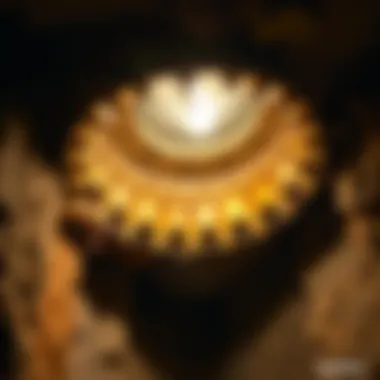
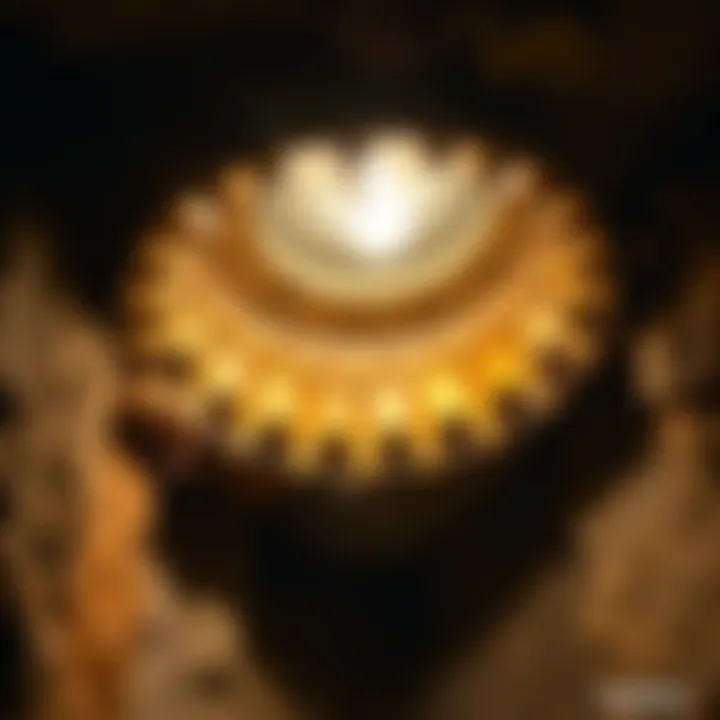
Intro
Crawl spaces often remain overlooked when considering home safety and functionality. These dark, damp areas might house pests, mold, and a host of other problems if neglected. Proper lighting is pivotal—not only for visibility but also for maintaining a healthy environment. In this article, we take a comprehensive dive into crawl space lighting. We will discuss how the right illumination can enhance safety, support pest management, and contribute to ongoing property maintenance. Together, we'll explore various lighting options, installation matters, energy efficiency, and maintenance tips.
Now, let’s get into the nitty-gritty!
Understanding the Pest
Identification
Identifying pests that might take residence in crawl spaces is a fundamental step in both home maintenance and pest control. Common culprits include rodents like mice and rats, various insects such as ants and termites, and even larger critters like raccoons. These pests can pose serious health risks and structural damages if left unchecked. Knowing the specific pests harboring in the shadows aids not just in the application of effective lighting but also in tailoring your approach to eliminate them.
Life Cycle
Understanding the life cycle of these pests can elucidate when and why they invade crawl spaces. For instance, termites thrive in humidity and seek shelter in moist areas to build their colonies. In contrast, rodents are known to breed rapidly; a pair of mice can lead to dozens in a short time, turning the crawl space into a bustling nest. Recognizing these patterns gives homeowners insight into effective prevention and control strategies.
Pest Prevention Strategies
Environment Modification
One effective method for pest management involves modification of the environment in crawl spaces. Here are some methods to consider:
- Reduce Humidity: Install dehumidifiers or ensure proper ventilation to decrease moisture levels, making the environment less inviting to pests.
- Seal Gaps and Cracks: Small openings can allow pests an open door into your home. Use caulk or foam to seal these areas.
- Keep It Clean: Regularly remove debris from the crawl space, as nests and hiding spots can attract various pests.
Physical Barriers
Incorporating physical barriers can mitigate pest intrusion. Options to consider include:
- Mesh Screens: Placing mesh screens over vents can prevent larger pests; even small mesh can deter insects.
- Covers for Crawl Space Entrances: A secure cover, whether a latch or lockable access, can keep pests from entering.
Control Methods
Chemical Control
For infestations that have crossed the threshold of prevention, chemical control methods might be necessary. Pesticides should be used judiciously, adhering strictly to manufacturer instructions. Some homeowners prefer to consult pest control professionals for this step. Organic and eco-friendly options are also available that aim to reduce chemical exposure risk for pets and humans.
Biological Control
On the flip side, biological control offers alternatives to chemical methods, focusing on natural predators. For example, introducing beneficial nematodes can help manage insect populations without the adverse effects of chemicals. Homeowners should do their research on such methods to grasp their viability and implications within a crawl space setting.
"The right lighting does not just reveal what lurks in the shadows; it also plays a role in ensuring these spaces remain unappealing to unwanted guests."
Understanding Crawl Spaces
Understanding crawl spaces is essential for any homeowner or property manager aiming to maintain the integrity of a building. These areas, often hidden from plain view, provide essential functions such as housing plumbing and electrical systems, as well as ventilation. Without a doubt, knowing how to properly manage a crawl space can significantly impact both safety and the overall longevity of a property.
Definition and Purpose
A crawl space is a narrow, unfinished space beneath the main floor of a building, designed primarily to allow access to plumbing, electrical, and heating systems. The height typically ranges from about 18 inches to four feet, which makes it a challenge to maneuver for most individuals. These spaces, although not frequently accessed, play a pivotal role in the structural support of a building.
The purpose of a crawl space extends beyond simple accessibility; it offers a buffer zone that helps in managing moisture and preventing damage to flooring materials. Properly ventilated, it maintains air movement that can keep the home more comfortable and energy efficient. However, if not maintained, these spaces can become hotbeds for various issues, impacting safety and aesthetics without the owner even realizing it.
Common Issues in Crawl Spaces
While crawl spaces have their benefits, they aren't without problems that require attention.
Moisture Accumulation
Moisture accumulation is often the most glaring issue in crawl spaces. It occurs when water from the ground or humidity infiltrates this pocket of air, leading to a myriad of issues. This unwanted moisture can cause wood rot, promote mold growth, and create an overall damp environment. The key characteristic of moisture accumulation is its capacity to remain concealed until it's too late, making it a critical concern for homeowners.
The unique feature of this issue is its domino effect; initially, a simple leak can snowball into expensive repairs and health risks for anyone living above. Therefore, keeping moisture at bay with proper lighting and ventilation is not just beneficial, it's essential.
Pest Infestations
Pest infestations in crawl spaces can become a real headache for homeowners if left to their own devices. Rodents, insects, and sometimes larger pests find crawl spaces to be a comfy refuge, especially if moisture and dark corners allow for undisturbed nesting. What makes this a popular talking point in the context of crawl spaces is that pests typically do not announce their presence until damage has been done. They can chew through electrical wiring, create structural issues, and lead to health risks related to unsanitary conditions.
In this case, the advantage of good lighting becomes apparent; it allows for better visibility and monitoring, which can deter pests before they take hold.
Structural Damage
Structural damage is perhaps the most alarming issue related to crawl spaces. Over time, moisture and infestations can weaken the foundational beams or flooring material, leading to significant hazards. The key characteristic of structural damage is that it is often a slow process, easily overlooked by an untrained observer yet devastating when it eventually manifests.
This issue can be traced back to poor maintenance practices, where minimal attention is paid to the signs of wear and tear due to neglect. What makes addressing structural damage crucial is the potential for safety hazards; weakened floors can collapse. Regular inspections along with adequately positioned lighting can help identify issues before they progress.
"Keeping an eye on your crawl space can save you a bundle in future repairs."
In summary, understanding crawl spaces goes beyond mere definition. It delves into the practical implications they have on safety, functionality, and property value, bridging the gap between a well-kept space and a hidden hazard. Investing time in understanding the dynamics of crawl spaces prepares any homeowner for the maintenance challenges that come their way.
Importance of Proper Lighting
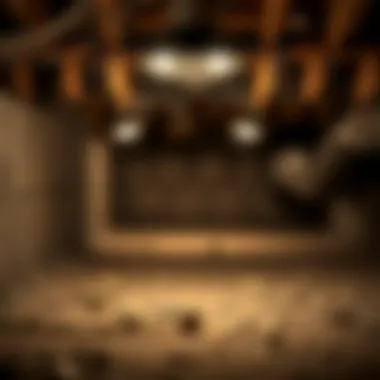
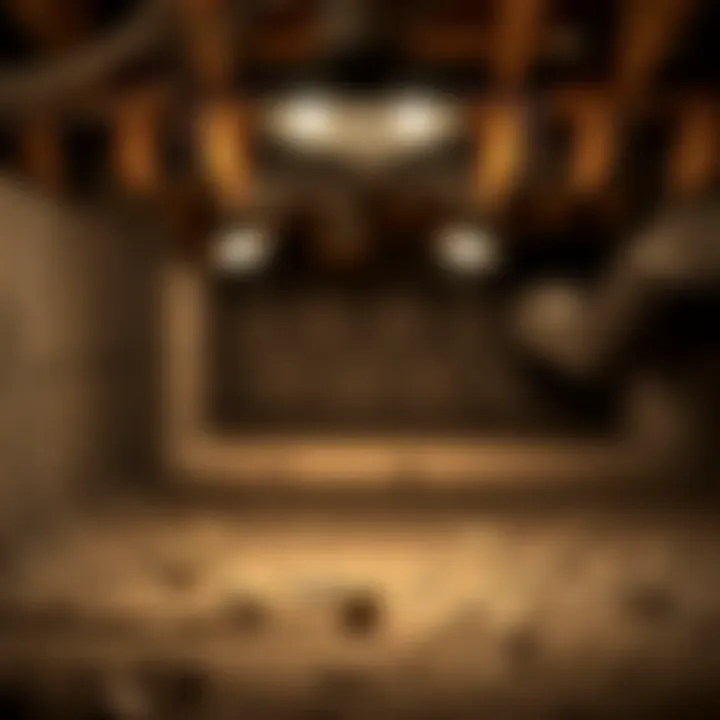
In any home, crawl spaces often fall into the shadows—both figuratively and literally. Understanding the significance of proper lighting in these areas isn't just about being able to see; rather, it involves enhancing safety, facilitating pest management, and promoting overall property maintenance. The reality is that without adequate illumination, a crawl space could become a breeding ground for problems that are neither seen nor addressed, leading to a myriad of issues that can escalate quickly with time.
One pivotal aspect is the ability to prevent accidents. Poor lighting can contribute to slips and falls, especially in moist environments where surfaces may become slick. A properly lit crawl space gives homeowners a clear view of the layout and potential hazards, allowing them to navigate safely.
Furthermore, optimal lighting is essential for monitoring and managing the pests that might make themselves at home in these hidden corners. Bright lights deter various pests while also enabling homeowners to conduct necessary checks and maintenance. All this feeds into the larger picture of property upkeep and safety, ensuring that crawl spaces serve their original purpose effectively.
Enhancing Safety
Reducing Trip Hazards
At the heart of reducing trip hazards in crawl spaces is the need to create an environment that minimizes the risks of accidents. Poor visibility can easily lead to missteps, especially in areas where structural elements might jut out or clutter may be present. By incorporating adequate lighting, homeowners can illuminate these spaces, thereby highlighting uneven flooring or protruding objects that could pose a risk.
Key Characteristics: One of the notable characteristics of enhancing safety through lighting is its ability to make otherwise invisible obstacles visible. This is a straightforward but effective method to improve safety measures within the home. Why is this a popular choice? Because it’s a simple solution that doesn’t require extensive remodeling yet makes a world of difference.
Advantages: The unique feature of this approach lies in its instant practicality. Homeowners can choose from various lighting options that suit their crawl space needs without dismantling the structure. Improving visibility not only protects inhabitants but can lead to quicker responses in emergencies. However, if one gets too fancy with lighting—over-illumination, for instance—there might be a potential confusion, leading to shadows in corners that could still hide dangers. Therefore, balance is key.
Improving Visibility for Inspections
Improving visibility during inspections is critical, especially considering that these assessments often happen in a cramped and potentially hazardous environment. The primary role of lighting here is straightforward: it enhances the ability to see and assess conditions in a crawl space thoroughly.
Key Characteristic: The key characteristic of having good visibility during inspections is the crispness of light quality. High-quality lighting lets homeowners—or professionals—identify potential problems before they escalate, ranging from mold growth to foundation issues. It's beneficial to have adequate lighting as a routine part of home maintenance, empowering homeowners to tackle problems head-on.
Advantages: This lighting strategy presents a unique feature that benefits overall assurance; you can spot water leaks, structural issues, or even signs of pests before they become headaches. Still, over-reliance on bright lights without a systematic inspection process can lead to missed details. The technology must complement human oversight, never replace it.
Facilitating Pest Management
Deterring Pests away from The Area
An essential aspect of crawl space lighting is its role in pest deterrence. While many might think of an exterminator when dealing with pests, adequate lighting often provides a preliminary safeguard that can keep these unwanted guests at bay.
Key Characteristic: Many pests are naturally averse to bright light. This characteristic is essential for creating a less hospitable environment for these critters. By positioning lights strategically, you can lessen the chances of infestations, which keeps maintenance tasks smoother.
Advantages: One significant benefit of using illumination as a deterrent is that it’s a non-invasive, environmentally friendly approach to pest management. You minimize reliance on chemical solutions or traps by simply illuminating the area. However, it’s crucial to maintain consistent lighting; turning them off at night can open a window for pests to return.
Monitoring and Inspection
Monitoring and inspection within a crawl space are often key to maintaining a healthy home environment. The contribution of proper lighting in this context cannot be overstated; it facilitates both regular checks and potential pest issue spotting.
Key Characteristic: the ability to conduct inspections with ease is a vital character feature that shines when good lighting is available. This makes periodic checks simpler and more thorough.
Advantages: The unique aspect of this method is its dual functionality. It not only illuminates but also makes it easier to spot problems that could impact structural stability or lead to pest infestations. On the flip side, relying on poor-quality lighting can lead to missed detections and ultimately, more significant issues down the road. Thus, using high-quality bulbs designed for durability is advisable in these humid environments.
"A stitch in time saves nine. Properly lighting your crawl space might just save you a whole heap of trouble later."
Ultimately, investing in proper crawl space lighting is not just a matter of visibility; it’s about creating an environment that fosters safety, supports maintenance efforts, and ensures that every nook and cranny of one’s home is properly monitored. Every step taken towards better lighting is a step towards a healthier, safer home.
Types of Crawl Space Lighting
In assessing the crawl space lighting options available today, it becomes clear that the choice of lighting goes beyond just brightness. Understanding the different types of crawl space lighting is crucial for homeowners to not only illuminate these often-overlooked areas but also to ensure safety, enhance maintenance, and control humidity. The right lighting can act as both a shield and a guide, making it essential to weigh each type’s characteristics, advantages, and potential drawbacks.
Incandescent Lighting
Incandescent lighting has long been a household favorite due to its warm glow and familiar aesthetics. These bulbs offer immediate illumination with a soft quality that can make crawl spaces feel less daunting. However, they also come with significant downsides. For one, incandescent bulbs consume a hefty amount of energy compared to newer technologies, increasing utility bills over time. Furthermore, they tend to generate a lot of heat, which can raise the temperature in a crawl space, potentially exacerbating moisture issues.
Nevertheless, they can be useful in spaces where frequent changes of lighting are not required. If a homeowner is looking for an affordable option that offers good color rendering, incandescent lights may fit the bill, but they should be used cautiously due to their higher energy usage.
Fluorescent Lighting
Fluorescent lighting is often regarded as a practical choice for crawl spaces thanks to its efficiency. Unlike incandescent bulbs, fluorescents consume less energy, producing more light per watt. This makes them an economically sound choice, particularly in larger crawl areas that require more expansive coverage. Another benefit is longevity; these bulbs typically last much longer than traditional incandescent options, reducing replacement costs.
However, the light emitted can sometimes appear harsh, creating an uninviting atmosphere. Fluorescents are also sensitive to colder temperatures, which might not be ideal if your crawl space experiences temperature fluctuations throughout the seasons. Despite these drawbacks, when used correctly, fluorescent fixtures can provide bright and effective lighting at a lower cost.
LED Lighting
LED lighting currently sits at the forefront of innovative crawl space solutions. These bulbs are champions of energy efficiency, consuming up to 75% less energy than incandescent options while boasting a remarkably long lifespan. Not only do LEDs emit very little heat, which is a boon for controlling humidity, but they also provide excellent brightness and a range of color options to fit the ambiance of any space.
In terms of installation, LEDs can be placed in compact fixtures and can be easily integrated with various smart home systems. However, some early LED products had issues with flickering or inadequate light distribution, but modern advancements have largely mitigated these concerns. For homeowners seeking long-term value combined with functionality, LEDs are frequently the go-to choice.
Solar-Powered Options
For those looking to embrace eco-friendly practices, solar-powered lighting can be an appealing solution. These fixtures harness sunlight to power their operations, reducing reliance on electrical systems. Ideal for outdoor crawl spaces or areas with sufficient natural light access during the day, solar lights can help to minimize energy costs while being kind to the environment.
However, there are limitations to consider. Solar lights typically do not provide as much illumination as traditional lighting options, and their efficiency can vary significantly based on weather conditions. For this reason, augmented setups that combine solar power with other lighting types can be a practical strategy, ensuring that areas remain illuminated regardless of external conditions.
Using the right type of lighting in your crawl space can be a game-changer. Each kind has its pros and cons—what's crucial is finding the best fit for your specific needs.
By carefully evaluating options such as incandescent, fluorescent, LED, and solar-powered lights, homeowners can better choose the illuminating solution that meets their safety and functionality requirements. Proper lighting does not just serve a utilitarian purpose but enhances the overall condition of the crawl space, impacting the home positively.
Installation Considerations
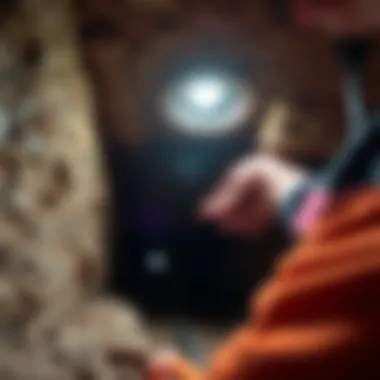
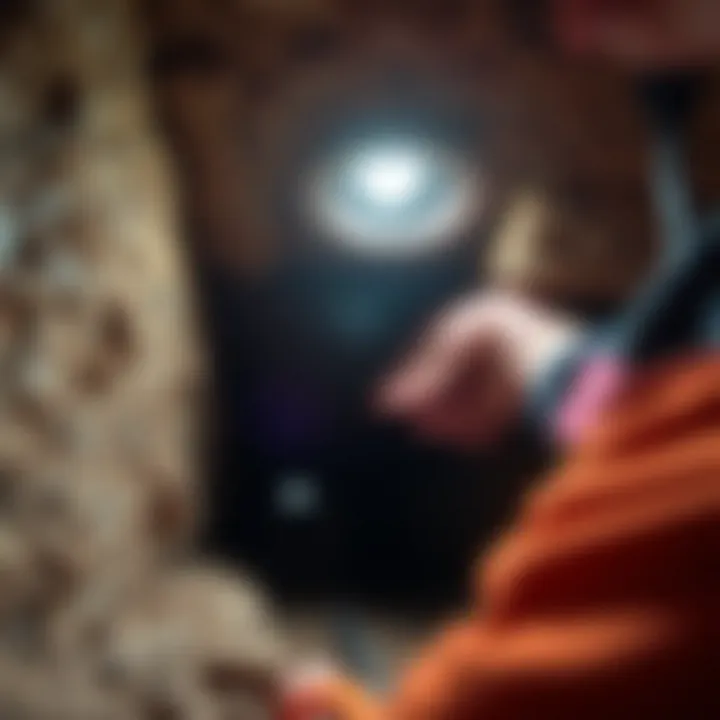
When it comes to crawl space lighting, installation isn't just a mere afterthought; it's a pivotal phase that sets the stage for everything that follows. Proper installation ensures that the lights not only function effectively but also contribute to the overall safety and livability of the space. A well-executed installation takes into account various factors like electrical requirements, placement strategies, and safety standards. This leads to enhanced visibility, lower energy costs, and a significant reduction in safety risks.
Electrical Requirements
Wiring and Circuitry
The aspect of wiring and circuitry in crawl space lighting is fundamental to creating a reliable and efficient setup. A common choice might be to rely on direct wiring, which ensures a consistent power source without the hassle of changing batteries or dealing with intermittent lighting. The main characteristic of this setup is its durability; with the proper gauge wiring and quality circuitry, homeowners can expect years of functionality.
One unique feature of employing proper wiring is the capacity for customization. By selecting appropriate fixtures tied to the wiring, you can adjust brightness according to specific needs. For instance, brighter lights can be used in areas prone to pests while softer lighting might suffice in places where regular inspections occur. However, any miscalibration can lead to excess energy use, which adds to monthly energy bills.
Safety Standards
Moving into safety standards, it cannot be overstated how essential they are in guiding the installation of crawl space lighting. Ensuring your lighting setup aligns with local electrical codes serves to mitigate risks related to fire and electrical shorts. The key characteristic here is the adherence to regulated guidelines, which are put in place to protect both people and property.
Moreover, safety standards often stipulate the use of moisture-rated fixtures in those damp environments, ensuring that lights can withstand humidity without shorting out. A significant advantage of maintaining these standards is the peace of mind that comes from reduced risk of electrical failure. On the flip side, stricter adherence may result in higher initial costs, but this can be viewed as a long-term investment in safety.
Placement Strategies
Optimal Height for Visibility
When discussing optimal height for visibility, this often means ensuring lights are positioned at a level where they effectively illuminate the space without creating glare or shadows. The idea is to find that sweet spot where the light can penetrate into the darker nooks of a crawl space without the risk of being too low, which can lead to damage or unwanted interference.
High positioning can be a beneficial choice, as it enables broader coverage and minimizes light blockage. Homeowners should also consider that the right height contributes to personal safety, making it easier to navigate these areas—especially during inspections. However, a drawback is that achieving this ideal height might require additional resources like mounting equipment or extensions, adding to overall project costs.
Strategic Location to Cover Entire Space
The strategic location of lighting fixtures in a crawl space is another critical factor. It’s not just about lighting any one area; the goal is to create a uniformly lit space that minimizes dark corners where pests might take refuge or structural issues might go unnoticed. A beneficial way to achieve this is by installing lights in a grid pattern throughout the space, ensuring that every square foot receives adequate illumination.
An unique feature of this approach is the way it assists in visual inspections; uniform lighting makes it easier for homeowners or professionals to spot any problems. However, there’s a potential downside, as this method might necessitate more fixtures and wiring, thus raising installation costs. But in the long run, well-placed lights can save on maintenance and pest control efforts, making it worth the initial investment.
Proper installation is the backbone of effective crawl space lighting. It's not just about putting in lights; it's about creating a safe, effective, and efficient workspace that can support the health of your home.
Finding that balance in both placement strategies and electrical requirements is crucial, and doing it right from the get-go makes your crawl space not only more functional but also a safer environment overall.
Energy Efficiency
Energy efficiency plays a crucial role in the discussion surrounding crawl space lighting. It doesn't just impact how much you pay on your electricity bill; it also contributes to a more sustainable and eco-friendly living environment. By opting for energy-efficient lighting solutions, homeowners not only save money but also reduce their environmental footprint. Let’s dive deeper into some pivotal aspects of energy efficiency when it comes to crawl space illumination.
Comparative Analysis of Light Types
Energy Consumption Rates
When evaluating light types for crawl spaces, one cannot overlook energy consumption rates. This aspect quantifies how much electricity each type of lighting uses, informing the decision-making process for homeowners. For instance, incandescent bulbs, while providing warm illumination, consume significantly more electricity compared to their LED counterparts.
Key characteristics of energy consumption rates include their ability to influence monthly energy costs. LEDs, for instance, can provide the same brightness as incandescent bulbs but use a fraction of the energy. This efficiency turns them into a beneficial choice, especially in low-visibility areas like crawl spaces where lights may need to be on more frequently than in other areas of a home.
Moreover, understanding these rates helps in conducting a full cost-benefit analysis of the lighting choices being presented. By calculating potential energy savings over time, a homeowner can see the benefit of investing in higher-quality, energy-efficient lighting. The savings could be notable when considering that LEDs have an extended lifespan—this leads to fewer replacements and trash.
Longevity and Maintenance
Longevity and maintenance form a vital component of the conversation regarding crawl space lighting. Fixtures that endure for longer periods reduce not only replacement expenses but are also less of a hassle for homeowners. LED lights, for instance, can last up to 25,000 hours or more. In contrast, traditional bulbs might only make it to about 1,000 hours.
A major characteristic here is the reduced need for frequent maintenance, which becomes especially relevant in hard-to-reach areas like crawl spaces. Residents who choose energy-efficient lighting options can enjoy reduced ongoing costs, both in terms of energy bills and the resources needed for regular replacements or repairs.
However, it’s also valuable to note the possible disadvantages. Some energy-efficient bulbs may have a higher initial cost. Yet, in the long run, this initial investment often pays off through lower energy costs and less hassle. Hence, understanding longevity helps in making informed decisions that align with both safety and financial efficiency.
Incorporating Motion Sensors
Another critical aspect tied to energy efficiency in crawl space lighting is the integration of motion sensors. These devices activate lights only when someone enters the space, avoiding unnecessary energy waste when the area is unoccupied. Aside from the obvious energy savings, motion sensors contribute to increased safety, ensuring that lights are on when needed without the homeowner needing to remember to flick a switch.
Motion sensors can be particularly appealing for homeowners who might not frequently check their crawl spaces. It’s about providing illumination only when necessary, closing the loop on both functionality and efficiency.
Humidity Control and Lighting
Managing humidity levels in crawl spaces is essential for maintaining a home's overall health and safety. High humidity can lead to various issues, including mold growth, wood rot, and damage to electrical systems. Lighting plays a surprisingly pivotal role in this scenario. Not only does it provide visibility, but it can also influence moisture levels when used strategically.
Impact of Light on Humidity Levels
The relationship between light and humidity is more intricate than it seems at first glance. Certain types of illumination, particularly those that generate heat, can affect the moisture content in the air. For instance, incandescent bulbs emit substantial heat, which can warm the air and reduce surface humidity in a crawl space. However, this is often a double-edged sword. While warmth might deter some moisture, excessive heat can exacerbate humidity levels, creating an inviting environment for mold and pests.
"Keeping an eye on humidity is like having a health check for your house. Light can be a tool, but it can also be a saboteur."
On the flip side, LED bulbs, often hailed for their energy efficiency, produce minimal heat. This quality makes them ideal for crawl spaces, as they will not contribute significantly to raising the temperature, thus maintaining a stable humidity level. Furthermore, combining LED lighting with a well-placed dehumidifier can lead to significantly improved air quality. Homeowners should consider the type of lighting used in conjunction with humidity control measures to create a balanced environment in the crawl space.
Selecting Moisture-Resistant Lights
Choosing the right lighting fixtures is crucial, especially in spaces prone to high moisture. Moisture-resistant lights are specifically designed to prevent moisture from interfering with their function and longevity. When selecting lighting for crawl spaces, look for fixtures rated for damp or wet locations. These lights are constructed to withstand the elements and are often crafted from materials that resist rust and corrosion.
There are several key factors to consider when making your selection:
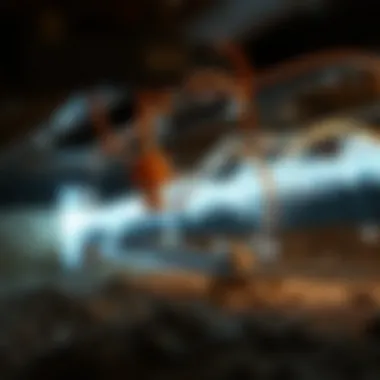
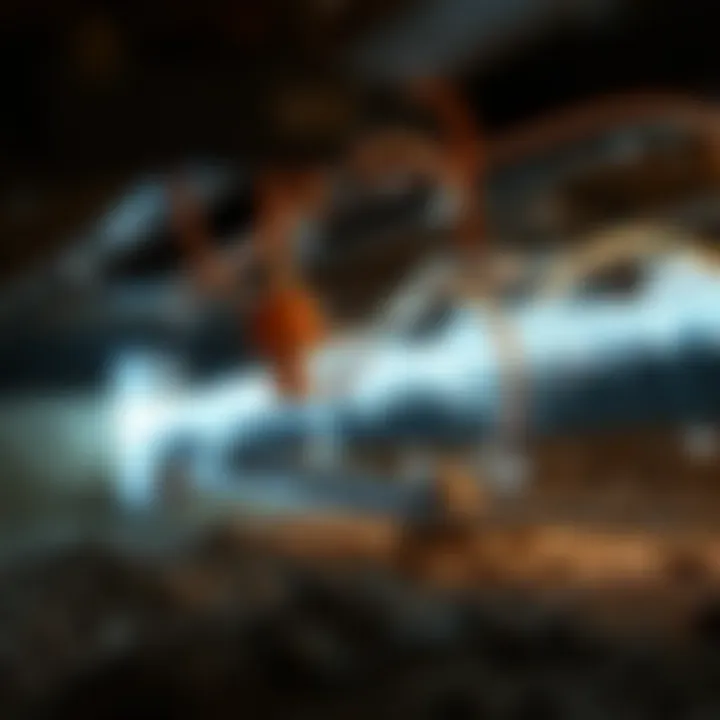
- Material Composition: Look for high-quality plastic or aluminum fixtures. These materials fend off rust, ensuring your lights remain operational over time.
- Sealed Fixtures: Fixtures that feature tight seals can help to keep moisture at bay, reducing the risk of electrical failure.
- LED Options: LEDs are not just energy-efficient; their robust design makes them suitable for damp environments. They come in many forms, including bulbs and strip lights, offering versatility in installation.
- Easy Access for Maintenance: Choose fixtures that allow easy access for cleaning and bulb replacement. If the light is hard to reach, it might lead to neglect, compromising both efficiency and safety.
When selecting your crawl space lighting, do not forget to consult professionals if in doubt. Ensuring that the light fixtures work harmoniously with your crawl space's humidity control system can prevent future headaches. Proper lighting isn't just about brightness; it’s a proactive measure towards safeguarding your home against the pitfalls of excess moisture.
In summary, crafting a well-illuminated crawl space that effectively manages humidity requires informed choices in both lighting type and fixture. The right approach can lead to a safer, healthier home.
Maintenance of Crawl Space Lighting
Proper maintenance of crawl space lighting is a critical aspect that often goes overlooked, yet it plays a pivotal role in ensuring the functionality and safety of these often neglected areas in our homes. Whether you're a seasoned homeowner or a first-time buyer, understanding how to care for the lighting in your crawl space can help maintain a healthy environment while preventing future headaches.
Regular Inspections
Regular inspections of crawl space lighting are essential for a few reasons. First, moisture and humidity are common enemies down there. When you don't check your lights frequently, you run the risk of bulbs failing or fixtures becoming corroded. Typically, it’s best to look over the lights every few months. Make a habit of checking if the bulbs are burning brightly or if they flicker. A flickering light might not just be annoying; it could signal a wiring problem or even indicate that there's water where it shouldn't be.
"An ounce of prevention is worth a pound of cure," especially when it comes to crawl spaces. Addressing small issues before they get out of hand can save you time and money.
Additionally, look for signs of rodent activity or bug infestations. Having a well-lit crawl space makes spotting these problems much easier. If you notice droppings or other signs of critters, you may need to consider pest control measures as part of your regular inspection routine. So, keep an eye out for discolored surfaces, excessive spider webs, or anything that feels off.
Cleaning and Upkeep
The upkeep for crawl space lighting involves not just ensuring that bulbs are functioning but also keeping the fixtures themselves clean. Dust and grime can gather, dimming the light even if the bulbs are perfectly operational. To combat this, consider using a damp cloth or a gentle cleaner to wipe around the light fixtures every few months. You'd be amazed at the difference a little cleaning can make.
Moreover, ensure that all bulbs used are moisture-resistant and rated for the conditions often experienced in crawl spaces. Incandescent and fluorescent lights, while common, are not always the best match for high humidity, which might lead to frequent replacements. LED options tend to have a longer lifespan and resist moisture better than their counterparts.
As you perform cleaning, also take the time to check the connections. A loose connection could lead to flickering lights or, worse, electrical hazards. If you’re unsure about any aspect of the maintenance process, consulting a professional can be a wise choice.
For more tips on maintenance, visit Wikipedia or join discussions on Reddit related to home upkeep.
Common Mistakes to Avoid
When considering crawl space lighting, it's essential to steer clear of certain pitfalls that can lead to safety concerns, inefficient energy usage, or ineffective pest management. Addressing these common errors is crucial for ensuring that your crawl space serves its intended purpose without any shortcomings or drawbacks.
Over-Illuminating the Space
One prevailing mistake homeowners might make is opting to flood the crawl space with more light than necessary. Often, the idea is that brighter is better, but here’s the catch: over-illumination can lead to a cascade of issues. For starters, an excessively bright crawl space can create glare, making it difficult to see clearly, which defeats the purpose of adding light in the first place. Moreover, the energy cost skyrockets when using high-wattage bulbs or multiple fixtures unnecessarily.
It's worth noting that most activities done in crawl spaces, like inspections or repairs, require adequate light but not a stadium-like brightness. In many instances, a modest level of illumination enhances visibility while still keeping energy consumption in check. To find the sweet spot, a homeowner should consider using 60-watt equivalent LED bulbs, which offer sufficient brightness while being energy efficient.
Therefore, avoiding the temptation to excessively illuminate the space not only conserves energy but also creates a more favorable environment for maintenance work.
Neglecting Light Quality
Another major oversight lies in the choice of lighting quality. Many folks might opt for the cheapest options available, thinking that all lights do the same job. But opting for subpar lighting can be detrimental in the long run. Poor-quality lights often emit a dim or harsh light, which can result in inadequate visibility and even affect the overall mood of the area.
When it comes to lighting quality, color temperature plays a significant role. For crawl spaces, lights that emit a warm white light, typically around 3000K, create a softer illumination that is easier on the eyes and less likely to create harsh shadows. These shadows can hide potential issues such as leaking pipes or pest activity, which you surely want to keep an eye on.
In addition, using moisture-resistant lights can prevent premature failure in the humid crawl space environment, ensuring your lighting serves you well over time.
"Quality trumps quantity, especially when it comes to lighting. Choose wisely to avoid unnecessary headaches down the line."
Selecting the Right Crawl Space Lighting
Choosing the right lighting for a crawl space is not just about aesthetic appeal; it plays a crucial role in enhancing safety, managing pests, and improving overall functionality. The crawl space, often overlooked or considered merely a storage area, deserves thoughtful lighting solutions. Proper illumination can enable homeowners to carry out inspections comfortably, deter pests, and reduce the risk of accidents due to poor visibility. Thus, understanding how to select the correct lighting system tailored to these specific requirements is paramount.
Factors to Consider
Brightness Requirements
Brightness is a key aspect when selecting lighting for a crawl space. It’s essential to achieve the right luminance so that any potential hazards can be easily identified. Crawl spaces can become so dark that even a modest amount of light might seem blinding at first, yet that can be dangerous if it isn’t sufficiently bright. The most effective lighting designs will find a balance; bright enough to see well but not so intense that it becomes disorienting.
A beneficial choice is to opt for lights with adjustable brightness levels, like some LED fixtures. This feature allows homeowners to tailor the light output based on the activities taking place in the crawl space, whether it’s routine maintenance or just a check-up. An added advantage is that adjustable brightness can prolong the lifespan of bulbs and save on energy consumption.
Energy Costs
Energy costs are another significant factor to consider when selecting crawl space lighting. Choosing energy-efficient options, such as LED bulbs, can result in substantial savings over time. Energy-efficient lights consume less electricity, lowering your monthly utility bills. An important characteristic of energy-efficient lighting is its longevity; LEDs, for instance, can last up to 25 times longer than traditional incandescent bulbs. This means fewer replacements and less hassle.
However, it’s pivotal to consider the upfront cost of energy-efficient systems. While initial investments might be higher, the long-term cost savings often justify this expense. If homeowners can reconcile those initial costs with the longevity and reduced energy bills, they can make a financially sound choice that contributes to a more environmentally friendly household.
Integration with Other Systems
Integrating crawl space lighting with other home systems can enhance its effectiveness. This can create a seamless network that works to ensure proper home maintenance while affirming energy efficiency.
Connecting with HVAC Systems
Connecting crawl space lighting with HVAC systems can substantially improve the functionality and safety of a home’s structure. When there’s adequate lighting in crawl spaces, it becomes easier to maintain heating and cooling systems, keeping humidity levels in check. Additionally, improved visibility ensures that potential issues within the HVAC system can be spotted promptly. Installing lights that activate when the HVAC system is running may also enhance energy efficiency, as they would not waste power when the system is off.
A beneficial aspect of this connection is that many modern HVAC control systems allow for automated lighting solutions. This synchronization can lead to less manual intervention and more consistent monitoring of the crawl space, ultimately supporting home maintenance efforts by reducing energy expenditure and promoting better health conditions in the environment.
Linking to Smart Home Devices
Linking crawl space lighting to smart home devices takes functionality a step further. With this integration, homeowners can control their lighting remotely, adjusting brightness levels or turning lights on and off using a smartphone or another device. This capability can boost accessibility, especially for those who may not frequently access their crawl space.
A notable feature of smart lighting systems is their capability to provide alerts or notifications about conditions in the crawl space, such as extreme humidity levels or unusual activity. While the initial cost may be higher than more traditional options, the enhanced convenience and improved control over the environment often outweigh these concerns. Investing in smart technology extends beyond mere lighting; it contributes to a heightened sense of security and awareness of the home environment.
"The right lighting is more than just illumination; it's an investment in your safety and home well-being."







